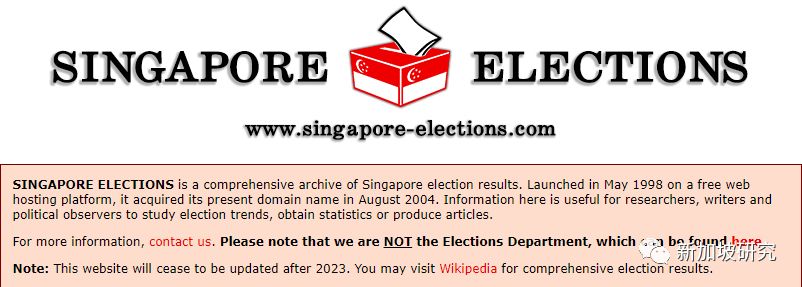Legislative Council Elections
After the end of the second World War in 1945, the Legislative Council of the Straits Settlement, which the British had first established on 1 April 1867 when Singapore, Malacca and Penang became a Crown Colony, was reinstituted as the Legislative Council of Singapore in 1946, as the other two states became part of the Malayan Union. On 18 July 1947, the Legislative Council Election Ordinance was passed to provide for a token number of seats to be filled by election, with colony-appointed officials holding the majority of seats. This opened Singapore to universal suffrage for the first time although candidacy and voting eligibilities were privy to “British subjects”. Candidates who garner less than one-eighth or 12.5% of the valid votes would have their election deposits forfeited. PP emerged as the dominant political party.
General Election 1948By-Election 1948General Election 1951By-Election 1952
Legislative Assembly Elections
The Rendel Constitution was introduced in 1953 to confer self-governance to Singapore. The Legislative Council was replaced by the Legislative Assembly, with more elected seats and reduced colony-appointees. Voting rights were now given to all local citizens. In 1955, LF won the largest number of seats to form a coalition government. With local legislators continuing to push for more autonomy, Singapore was finally granted complete self-government in 1958 with a fully-elected legislature and compulsory voting for all. In 1959, PAP won a landslide victory and came into power. On 16 September 1963, Singapore joined Malaysia along with Sabah and Sarawak, with the blessings of its former British masters. A year later, PAP extended its presence into the Peninsular and sent a token number of candidates to contest the Malaysia General Election 1964. Although PAP was badly routed, the move fuelled friction between the Singapore state’s leaders and Malaysia’s UMNO-led governing Alliance Party coalition.
General Election 1955By-Elections 1957General Election 1959By-Election April 1961By-Election July 1961General Election 1963By-Election 1965
Parliamentary Elections
Within the two tumultuous years when Singapore was part of Malaysia, differences between the local PAP government and the national Alliance Party government eventually reached an irreconciliable stage. On 9 August 1965, Singapore separated from Malaysia to become an independent Republic and the Legislative Assembly was renamed Parliament. Since then, PAP has been returned to power in every general election with an absolute supermajority. After Barisan boycotted Parliament in 1966, PAP gained complete dominance over the legislature with no opposition representation until 1981 when WP ended the monopoly and went on to capture the first opposition GRC in 2011. A Parliament term is no more than five years and a fresh election is called after its dissolution.
By-Election January 1966By-Elections March 1966By-Elections November 1966By-Elections 1967General Election 1968By-Elections 1970General Election 1972General Election 1976By-Election May 1977By-Election July 1977By-Elections 1979General Election 1980By-Election 1981General Election 1984General Election 1988General Election 1991By-Election 1992General Election 1997General Election 2001General Election 2006General Election 2011By-Election 2012By-Election 2013General Election 2015By-Election 2016General Election 2019
Municipal Commission Elections
Established in 1887, the Municipal Commission administered the planning of Singapore’s town area and managed essential utilities such as electricity and water, while the countryside came under the Rural Districts Council. Municipal Elections from 1889 to 1911 gave the island its first taste of elections but were abolished in 1913 owing to excessive politicking. They were restored after World War II to broaden political participation at the local level in preparation for Singapore’s self-governance.
Municipal Election April 1949Municipal Election December 1949Municipal Election 1950
City Council Elections
On 23 September 1951, Singapore was elevated to the status of a British city and the Municipal Commission was renamed the City Council. In 1957, after recommendations and reviews of three committees were passed, the City Council became a fully elected body and the office of Council President was replaced by a Mayor. After taking power in 1959, the PAP government phased out the City Council in order not to let it become a separate centre of power and its functions were integrated into government agencies. In 1986, some of these functions were again transferred to town councils under the jurisdiction of elected Members of Parliament.
City Election 1951City Election 1952City Election 1953City Election 1957City By-Election 1958
National Referendums
To date, there has only been one referendum in Singapore’s history, which was to allow citizens to decide the country’s status within Malaysia after the merger.
National Referendum 1962
Presidential Elections
In 1992, the Singapore Constitution was amended to provide for a President elected by the people. The role was expanded include veto powers over detentions made under the Internal Security Act, key government appointments and use of the national reserves. Prior to this, the past four Presidents were elected by the legislature, beginning with Yusof bin Ishak, who was Yang di-Pertuan Negara (Head of State) from 3 December 1959 until his appointment as Singapore’s first President upon the country’s independence. An elected President’s term is six years and candidates have to fulfill stringent conditions in order to be eligible to contest.
Presidential Election 1993Presidential Election 1999Presidential Election 2005Presidential Election 2011Presidential Election 2017
Appendix•Political parties in Singapore ►•Electoral constituencies & divisions ►•Candidates name list (alphabetical order):
A – BCD – FGH – IJ – KLa – LeLi – LuMNOP – RSTU – WY – Z•Information on family relations ►•Resources for this website and awards ►
圖文:轉自新加坡研究
